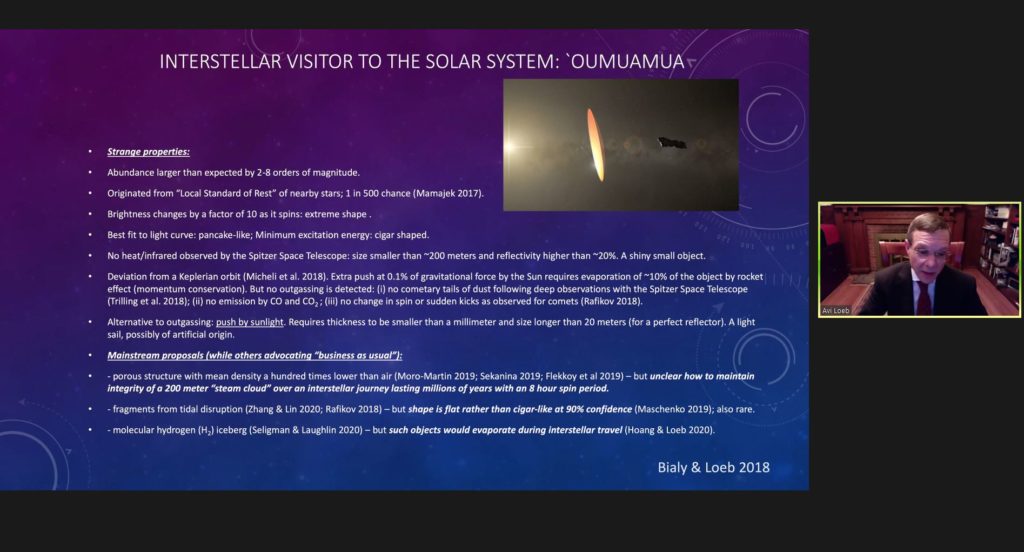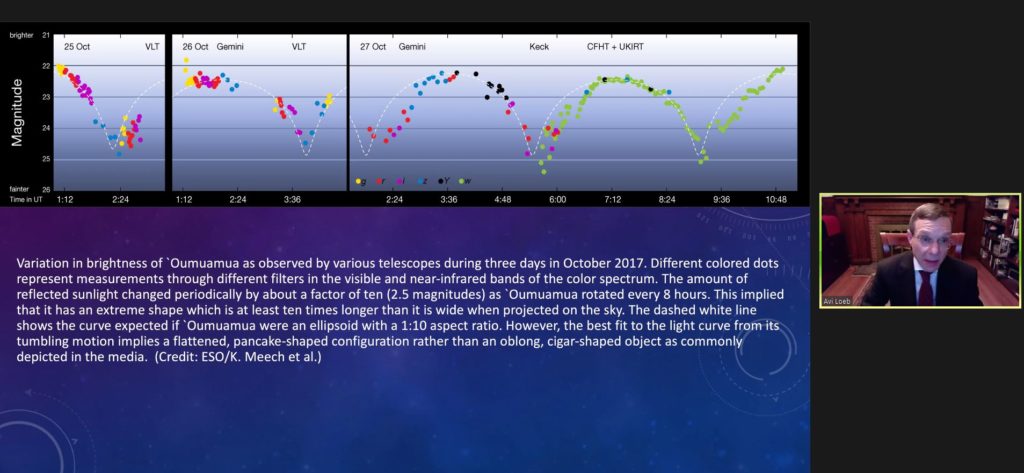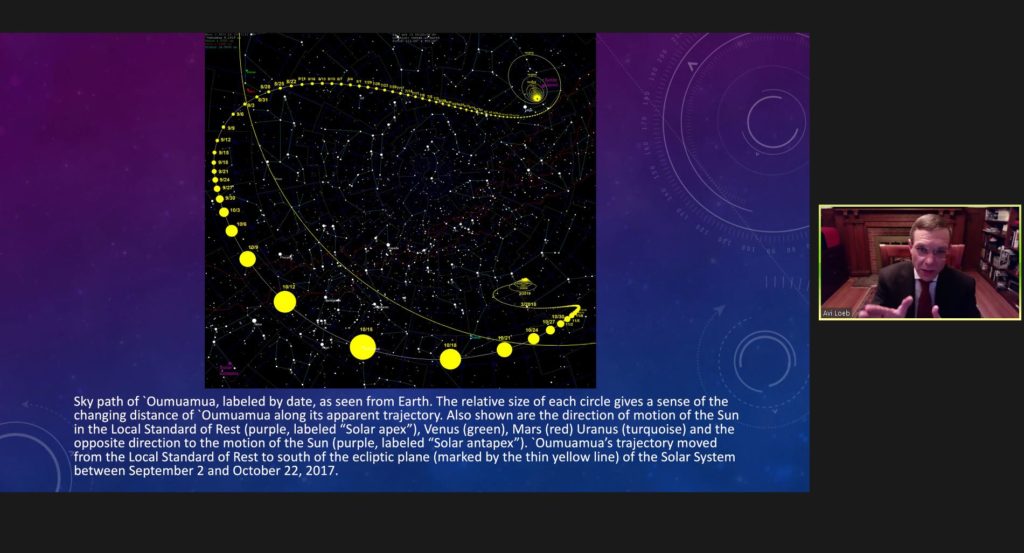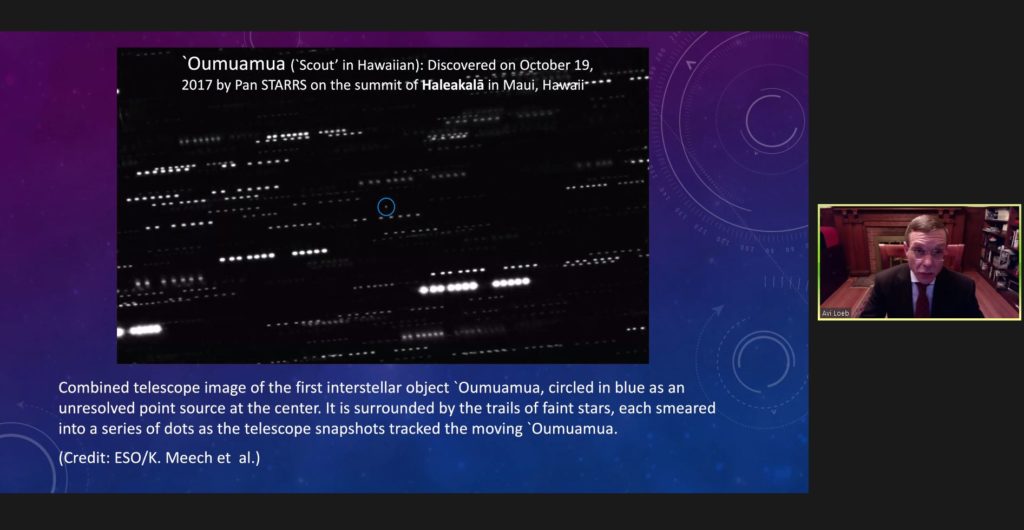The Search for Extraterrestrial Life
Are We the Sharpest Cookies in the Jar?
Abraham (Avi) Loeb
Baird Professor of Science
Director, Institute for Theory and Computation, Center for Astrophysics
Harvard University
About the Lecture
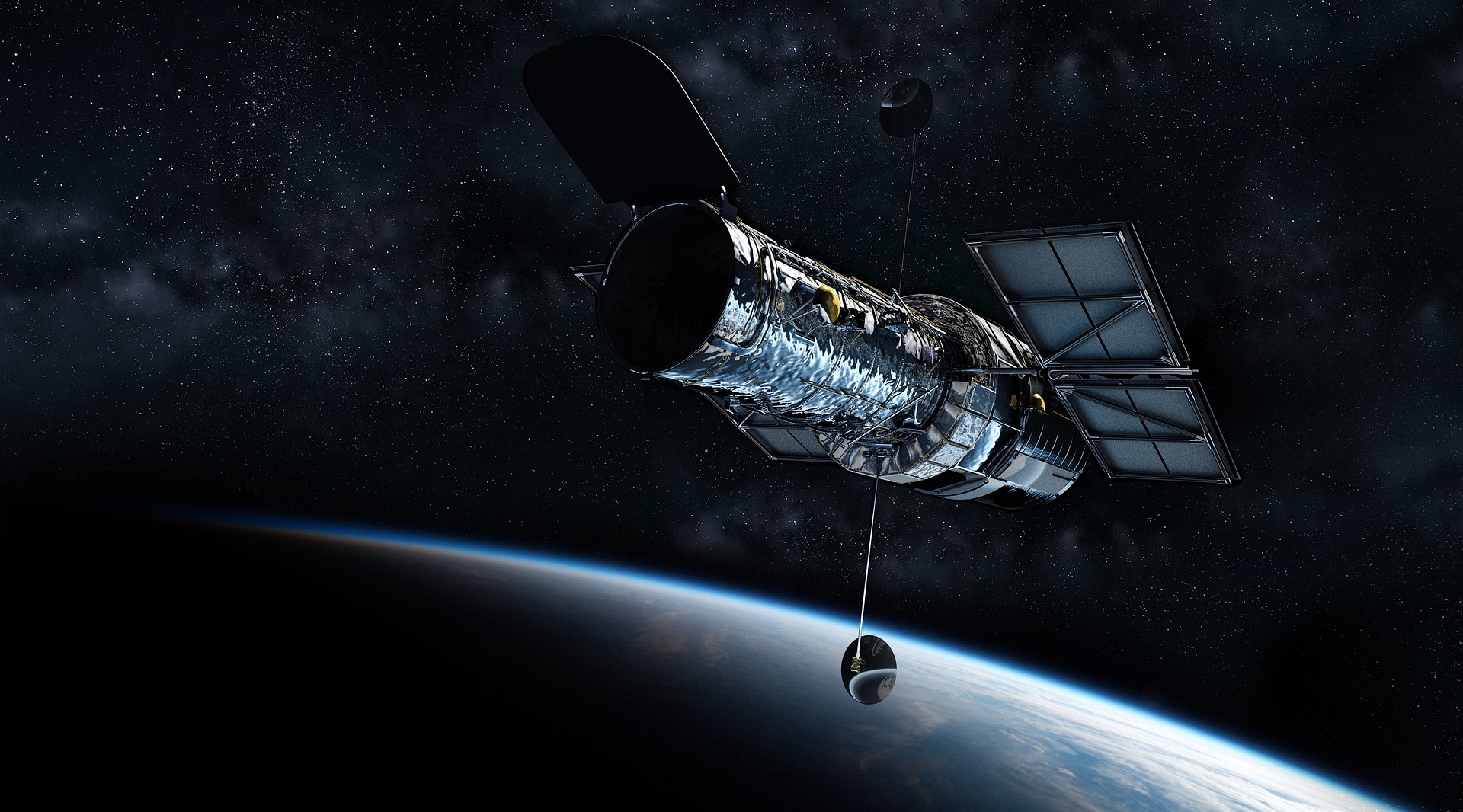
The search for extraterrestrial life is one of the most exciting frontiers in Astronomy. First tentative clues were claimed close to Earth: the weird interstellar object `Oumuamua and the cloud deck of Venus. Our civilization will mature once we find out who resides on our cosmic street by searching with our best telescopes for unusual electromagnetic flashes, industrial pollution of planetary atmospheres, artificial light or heat, artificial space debris or something completely unexpected. We might be a form of life as primitive and common in the cosmos as ants are in a kitchen. If so, we can learn a lot from others out there.
Bibliography
Avi Loeb: Extraterrestrial – The First Sign of Intelligent Life Beyond Earth
Houghton Mifflin Harcourt (January 26, 2021)
ISBN-10 : 0358278147
ISBN-13 : 978-0358278146
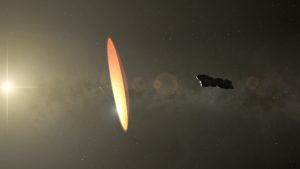
About the Speaker
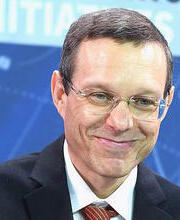
Abraham (Avi) Loeb is the Frank B. Baird, Jr. Professor of Science at Harvard University and Director of the Institute for Theory and Computation at the Harvard-Smithsonian Center for Astrophysics. In addition, he is Founding and a current Director of Harvard’s Black Hole Initiative. He also chairs the Board on Physics and Astronomy of the National Academies of Sciences, serves as Science Theory Director for the Breakthrough Prize Foundation and chairs the Advisory Committee for the Breakthrough Starshot Initiative. Previously, Avi was at the Institute for Advanced Study in Princeton. He also served on the President’s Council of Advisors on Science and Technology (PCAST) at the White House.
Avi’s is an author of 8 books and more than 800 research publications, and he has made significant contributions in a wide variety of subjects in astronomy and cosmology, including contributions to the study of black holes, the first stars, the search for extraterrestrial life, and theoretical research on the future and fate of the Universe.
Among other honors and awards, Avi is an elected fellow of the American Academy of Arts & Sciences, the American Physical Society, the International Academy of Astronautics, and an elected member of the National Academies of Science. He has the distinction of having been the longest serving Chair of the Harvard University Department of Astronomy. And, Time Magazine selected Avi as one of the 25 most influential people in space in 2012
Avi earned his PhD in Physics from the Hebrew University of Jerusalem.
Minutes
On February 5, 2021, by Zoom videoconference broadcast on the PSW Science YouTube channel, President Larry Millstein called the 2,434th meeting of the Society to order at 8:02 p.m. EST. He then introduced the speaker for the evening, Avi Loeb, Baird Professor of Science at Harvard University and Director of the Institute for Theory and Computation at the Harvard-Smithsonian Center for Astrophysics. His lecture was titled, “The Search for Extraterrestrial Life: Are We the Sharpest Cookies in the Jar?”
Loeb began by asking, “are we alone?” He encouraged humanity to embrace a “cosmic modesty.” Given that current data suggests approximately half of all Sun-like stars in the observable Universe host an Earth-sized planet in their habitable zone, Earth resembles a single grain of sand on an enormous beach. Rather than assume humanity is unique, Loeb advocated that we assume the existence of other technologically advanced life and search for its signatures.
In 2015, entrepreneur Yuri Milner asked Loeb to advise him on an initiative to visit the nearest star system within their lifetimes. After months of consideration, Loeb agreed to the invitation and began working on Project Starshot, a proposed mission to send a vehicle to Proxima Centauri, four light-years away.
Now named the Breakthrough Starshot, the initiative aims to launch a spacecraft that will reach 1/5 light-speed and take a picture of Proxima Centauri’s potentially habitable planet, Proxima B. From launch to the receipt of a picture back on Earth will take approximately 24 years.
Loeb proposed that the Starshot spacecraft be a “lightsail” mounted with 1 gram of camera, navigation, and communication instruments. The lightsail would weigh approximately 1 gram, span several meters, and be accelerated to 1/5 light-speed by a 100 gigawatt ground-based laser. Feasibility studies are currently underway regarding the laser optics, the design of the sail, and the challenge of communicating across four light-years, Loeb said.
In addition to crossing interstellar space to look for advanced life on planets around other stars, Loeb said we should not assume that every rock that passes through our back yard is “just a rock.” On October 19, 2017, scientists at Pan-STARRS in Hawai’i identified the first interstellar object in the Solar System. They named it “Oumuamua.”
Because Oumuamua is only several hundred feet long, Earth-based telescopes could not resolve it. Scientists tracked the object’s trajectory and observed that it moved from the Local Standard of Rest to the south of the elliptic plane of the Solar System over an almost 2-month period. By observing fluctuations in the light reflected by the object, scientists determined Oumuamua was a flat, pancake-shaped object tumbling through space.
The object’s deviation from Keplerian orbit suggests that Oumuamua was “pushed.” But, the Spitzer Space Telescope did not observe any infrared energy or any outgassing in the object. Several explanations have been advanced to explain the push: that it is a porous structure of extremely low density, that it is a fragment from tidal disruption, and that it is comprised of molecular hydrogen. But none of these suggestions is consistent with all the object’s observed characteristics, Loeb said.
Loeb asked us to consider another hypothesis: that Oumuamua was artificially created and pushed by an alien civilization. He said that this hypothesis is consistent will all observations of the object's motion and physical characteristics, in contract to other theories. And, he said, while it might seem outlandish to suppose that a non-natural object would ever appear like this, in fact, in September 2020, Pan-STARRS discovered another unusual object exhibiting similar characteristics to those of Oumuamua, whose trajectory could only be explained by a “push.” The object was ultimately revealed to be a rocket booster ejected into space in 1966.
Loeb said the story of the rocket lends credibility to the notion that artificial objects with a large surface-to-mass ratio can be distinguished from naturally-made rocks based on their excess push away from the Sun without a cometary tail.
A second interstellar object was discovered on August 30, 2019. This object looked like a comet. To Loeb, the mundane nature of this second object makes Ouamuamua even more unusual.
To conclude, Loeb said humanity needs to be prepared for its next encounter with potential evidence of alien life and should examine more than radio signals. He recommended we broaden our scope and search for evidence in physical objects.
President Millstein then opened the meeting for questions.
One questioner - Dick Garwin - asked if the light sail could be made and maintained sufficiently flat that force differences in the way the laser light impinged on the surface would not tear the material. Loeb replied that he thought studies indicated that that would not be a problem.
After the question and answer period, President Millstein thanked the speaker, made the usual housekeeping announcements, and invited guests to join the Society. At 9:40 p.m., President Millstein adjourned the meeting.
Temperature in Washington, D.C.: 6° C
Weather: Partly Cloudy
Concurrent Viewers of the Zoom and YouTube live stream, 152 and views on the PSW Science YouTube and Vimeo channels: 553.
Respectfully submitted,
James Heelan, Recording Secretary
